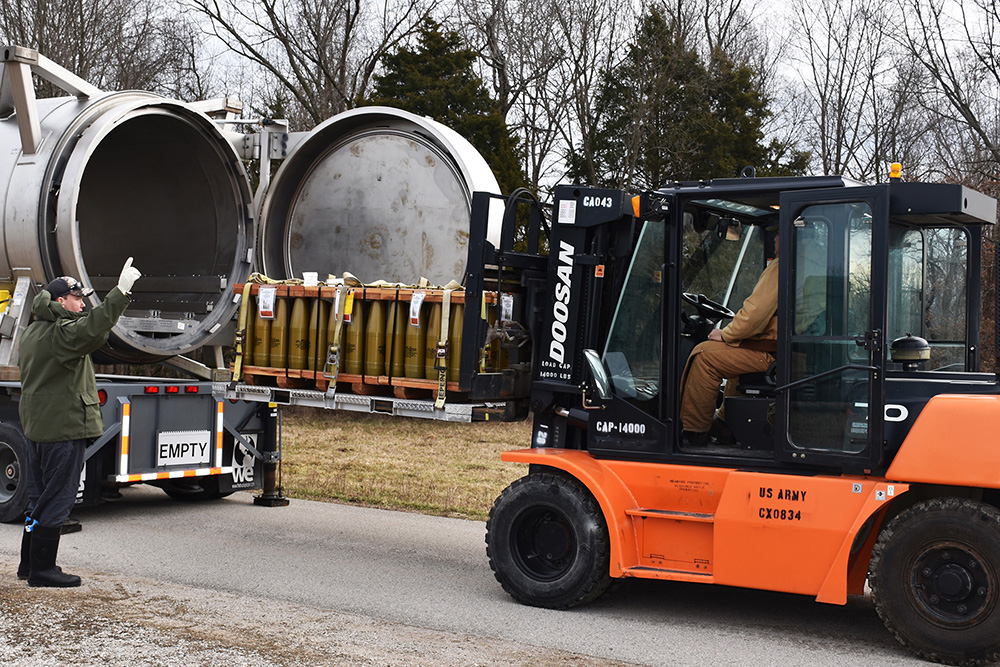The Defense Department remains committed to upholding global norms against the use of chemical weapons after fulfilling its decades-long pledge to destroy the last vestiges of the United States’ noxious ammunition stockpile, a top Pentagon official said today.
“It’s hard to overstate the importance of the milestone we achieved in July. One hundred percent of the world’s declared chemical weapons have now been relegated to the ash heap of history” said Kingston A. Reif, deputy assistant secretary of defense for threat reduction and arms control.
In July, disposal experts destroyed the last remaining M55 rocket filled with deadly Sarin nerve agent at a storage facility in Kentucky. With that, DOD completed the safe elimination of about 30,600 tons of declared chemical agent amassed between World War I and the late 1960s.
The milestone ushered the U.S. into compliance with the Chemical Weapons Convention, a treaty prohibiting the production and use of chemical weapons and their destruction. The U.S. ratified the treaty in 1997, joining a coalition that now includes nearly 200 countries.
“The end of [the weapons’] destruction strengthens U.S. diplomatic and moral leadership, as the United States continues to lead by example, hold violators of the Chemical Weapons Convention accountable, and push for universalization of the convention,” he said.
Reif, who oversees the Pentagon’s chemical weapons demilitarization initiative, said reaching the milestone was no easy task. Nearly 3.5 million chemical munitions, 22,500 bulk containers, and more than 57,500 bottles of chemical agent were destroyed since the U.S. ratified the treaty.
He said doing so required dangerous, painstaking work to disassemble rounds “designed with the sole purpose of detonating on the battlefield and inflicting horrendous suffering on their victims.”
“This achievement has relied on decades of hard work by thousands of military and civilian employees and contractors,” Reif said. “As a nation we owe an enormous debt of gratitude to those who dedicated their time, talent and efforts to this mission.”
But even after achieving the important milestone, he said the United States’ work to ensure a world free of chemical weapons is not complete.

Toxic materials handlers guide munitions into a container during munitions movement training at the Blue Grass Army Depot, Ky., Feb. 13, 2019. © DOD
The Pentagon is now charged with the task of closing the two facilities in Colorado and Kentucky used in the destruction of the weapons. Reif said that mission will be completed in 2028.
The U.S. will also continue to support the Organization for the Prohibition of Chemical Weapons, the international body charged with implementing the Chemical Weapons Convention.
Reif noted that the threat posed by chemical weapons is far from contained, despite the U.S. reaching its important milestone.
He said the Pentagon will continue to “support the safe assessment and destruction of chemical weapons threats, including nation-state chemical weapon stockpiles, no matter the size, location or environment.”
“Though the [United States’] destruction mission is over, the Defense Department will not cease in its efforts to support effective implementation of the Chemical Weapons Convention by working to ensure the OPCW’s readiness to face current and future chemical weapons threats,” he said.





